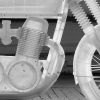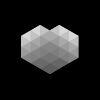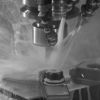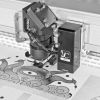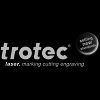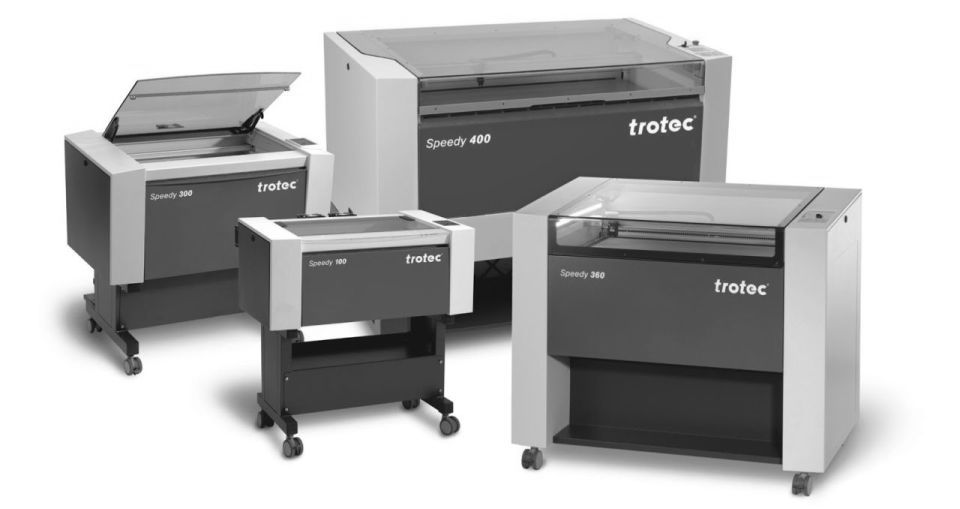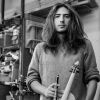3 d f a b w/ r h i n o 8
What you want/need to know
Rhino 8 for Mac & Windows uses a 3d modeling principle called NURBS which is different from the more common MESH 3d modeling. However for 3d printing in Rhino it is still necessary to create a MESH after the NURBS modeling process. We would like to briefly introduce the principle concepts of the two basic 3d modeling concepts.
NURBS 3d modeling concepts
Curve: basically the points, lines and segments which make up the model.
Surface: a plane without thickness created between a group of closed curves.
Polysurface: a set of multiple contiguous surfaces that build a volume.
MESH 3d modeling concepts
Vertices: a position along with other information such as color, normal vector and texture coordinates.
Edges: a connection between two vertices.
Faces: a closed set of edges that form a plane without thickness.
Polygon: a coplanar set of faces that build an open or a close volume.
So a SOLID is a completely closed and joined polysurface that creates the 3d model and a MESH is a collection of vertices, edges and faces that defines the shape of the 3d model. For 3d printing we need a MESH to create a STL print file.
The workflow towards a prototype print file in 4 steps:
Surface: a plane without thickness created between a group of closed curves.
Polysurface: a set of multiple contiguous surfaces that build a volume.
Edges: a connection between two vertices.
Faces: a closed set of edges that form a plane without thickness.
Polygon: a coplanar set of faces that build an open or a close volume.
Rhino 8 provides all the tools you need to create a model, and prepare the model to be 3D printed, cut, machined or molded. Your NURBS model can be transformed into a MESH, exported in one of the many file formats.
However, there are plugins available which make life a little easier and completer…
3D Hubs
If you don’t own 3D machinery, you might want to use one of PROTOLABS by 3D Hubs. A worldwide network of 3D printing, CNC machining, Laser cutting (sheet metal) and Injection molding tools. Right now there are worldwide 35,000+ businesses available.
What you want/need to know about CNC milling or machining
CNC milling or machining of a large variety of objects – mechanical parts, landscape models, engraved signs, jewelry, woodwork, art, to name a few – can be done straight from Rhino 6. From the created model, through a plugin, all the stages of milling a smooth object are programmed. The most efficient tool paths are automaticly generated. The simulated process can be played as a movie inside Rhino, as a last check, eventually showing the desired object after milling.
CNC machining concepts
Roughing: fast and efficient removal of material to create an object with a rough surface
Finishing: parallel or z-level smoothing of the rough surface with a set level of smoothness
Pencil finishing: trace a thin cutter along sharp concave – inside – corners to clean them up
Multi axis machining
In machining 5-axis typically refers to the ability of a CNC machine to move a part or a tool on five different axes at the same time. 3-axis CNC machining move a part in two directions (X and Y), and the tool moves up and down (Z). 5-Axis machining centers can rotate on two additional rotary axes (A and B) which help the cutting tool approach the part from all directions.
Milling shops
Since every job might require different milling; 2D, 3D or 5D, most milling jobs are typically done by specialized, well equipped milling shops. We can lead you to excellent companies. If you’re interested in owning your own milling center, we can advise you where and what to buy.
Click center picture below for a video on 5-axis machining.
Finishing: parallel or z-level smoothing of the rough surface with a set level of smoothness
Pencil finishing: trace a thin cutter along sharp concave – inside – corners to clean them up
What you want/need to know about 2.5 d laser & waterjet cutting
There are two main styles of laser cutters: Desktop/plotter and CNC/G-Code driven industrial machines. The two different types require different preparation methods.
Workshop type laser cutters are generally a bit more lightweight than their industrial counterparts and are intended for – basically – cutting non-metal materials in an office or workshop environment. They work a lot like computer printers – A printer driver is installed and you can simply print to the machine like you would with a normal paper printer, via the Print dialog box.
Industrial laser or waterjet cutters normally need CAM (Computer Aided Manufacturing) software to drive them. Geometry from the design software (Rhino) is transferred to the CAM software, which in turn translates it into a language (G-Code) that the cutting machine can understand.
Working with industrial laser and waterjet cutters require exporting a transfer file with the 2D geometry to be cut, as these machines do not work like printers and virtually none will accept native Rhino files. They may also require the geometry from Rhino to be converted to lines and arcs before exporting. This depends on the age and sophistication of the machine/software used.
The most commonly used export format in industry is an AutoCAD DXF. Others include AutoCAD native DWG and Adobe Illustrator (AI, EPS). PDF files containing vector info are also becoming quite commonly used. All the above formats except PDF can be natively exported by Rhino. To export PDF files from Rhino, it is necessary to print to a PDF printer program.
A great many industrial cutting machines and software only understand lines and arcs. So, to cut parts successfully, it is necessary to convert any free-form NURBS curves (splines) in your file into a series of arcs and lines. By convert, we mean that the spline curve is approximated by a polyline or polycurve containing only arc and line segments. Control the approximation tolerance by using the correct settings during the conversion process. Approximating splines by a series of tangent (or nearly tangent) arcs is generally preferable to just polylines, because they allow a more accurate cut with a smaller file and less possibility of slowdowns along the curves, especially with older machines. Consult your service bureau if in doubt.
Further reading: McNeel’s Wiki
Trotec Laser Cutters & Engravers
Trotec is one of the world’s most important manufacturers of laser machines for engraving, cutting and marking.
As the tech leader in the international market for laser cutters, engravers & markers, they continuously develop and improve their lasers. A good example is the Speedy Series, the world’s first laser equipment that can combine CO2 and fiber laser technology in one machine. All systems and machines are designed and made in Austria.
Click the logo left and picture below for two short videos on the basics of laser cutting & engraving
As the tech leader in the international market for laser cutters, engravers & markers, they continuously develop and improve their lasers. A good example is the Speedy Series, the world’s first laser equipment that can combine CO2 and fiber laser technology in one machine. All systems and machines are designed and made in Austria.


